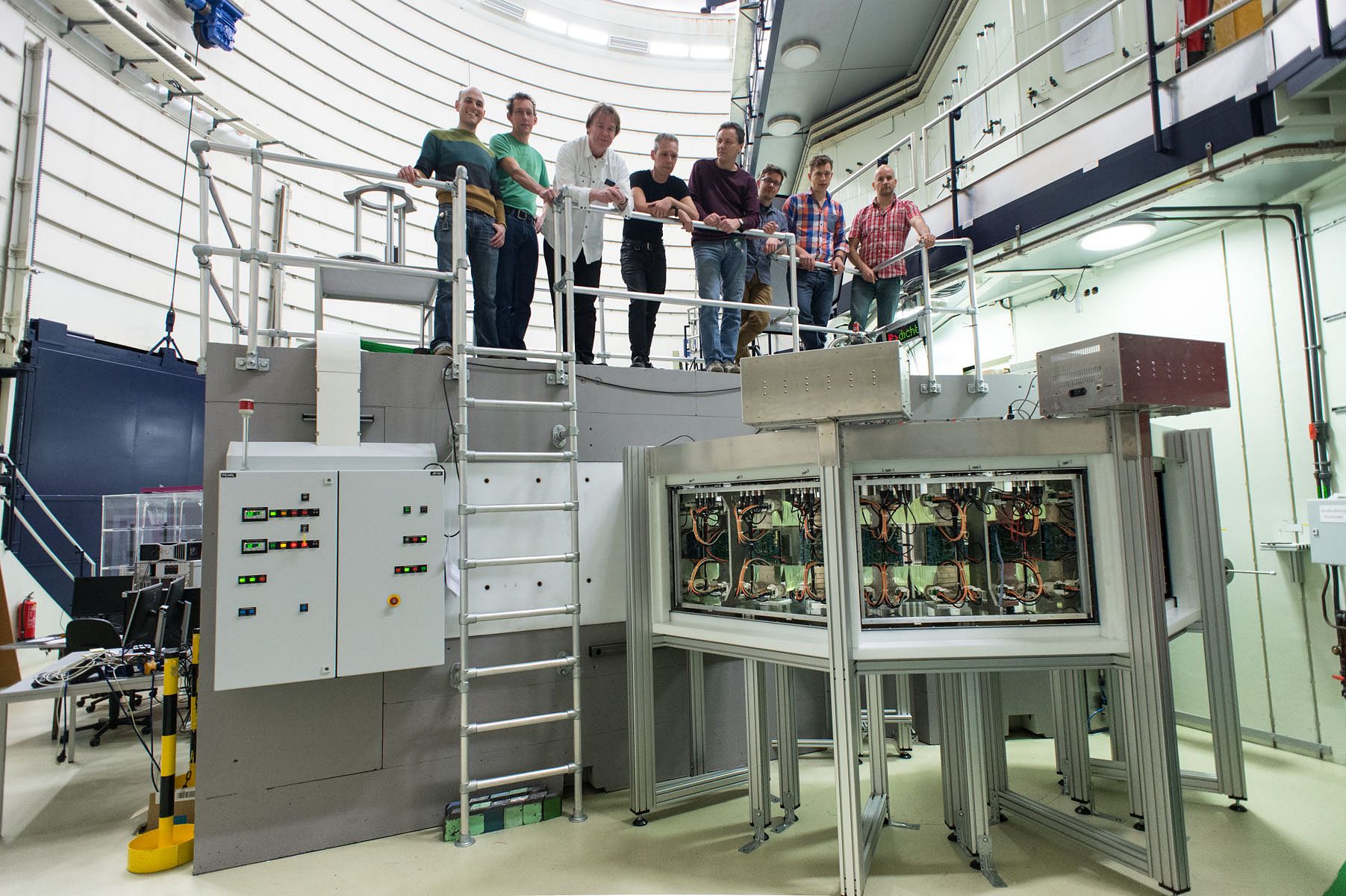The new neutron diffractometer PEARL at the Reactor Institute Delft opened today. Seventy guests from the international neutron research community watched the counts come in. “It’s hard to overestimate the variety of applications,” one of them said.
On a video link to the reactor hall the audience saw the ‘slab of concrete’ that connects the instrument to the reactor’s core. Out fly the neutrons, to be stopped by a shutter. Dr. Lambert van Eijck pointed out to the camera the semicircle of detectors that make up the neutron diffractometer. He then invited RID director Professor Bert Wolterbeek to open the shutter and bombard the sample in the beam with neutrons. Immediately the audience saw peaks growing on the screen. From a slow accumulation of noise, a number of peaks shot up. The audience applauded as the new detector PEARL had clearly sprung alive.
To the initiated, the peaks point out distances between atoms in crystals from the sample. Instead of single crystals, the sample contains a few cubic centimetres of powder. Thanks to a clever method, called the Rietveld refinement, scientist can translate the peaks from the diffractometer into distances between atoms and into the crystal structures that bind them together.
Knowledge of crystal structures can hardly be overstated. It is needed in material science and research into new materials for hydrogen storage, fuel cells, magnetic cooling and lithium batteries as well as pharmaceuticals, turbine blades and catalysts.
Several scientists described the iterative way they work with the instrument. Out comes a profile of the matter under study. The scientists set up a molecular model that fits the profile and make improvements in the molecule to improve the performance. With the improved materials they then return to the diffractometer to check the structure. This iterative process allows them to adjust material properties to best fit their purpose.
The nearest facilities for neutron powder diffraction used to be in Oxford, Paris or Grenoble. Now scientists can make use of the PEARL facility at the Reactor Institute Delft. Despite the lower reactor power (2 megawatts) the instrument compares well to the larger facilities, said Van Eijck who has built the instrument over the last five years. He also added that he was still working on reducing the background radiation.
The day was closed with a dinner for chief technology officers from several large companies who are interested in the possibilities that neutron powder diffraction offers. Professor Katia Pappas, who initiated the instrument seven years ago, said she looked forward to setting up joint research programmes, rather than plainly renting out the facility.



Comments are closed.